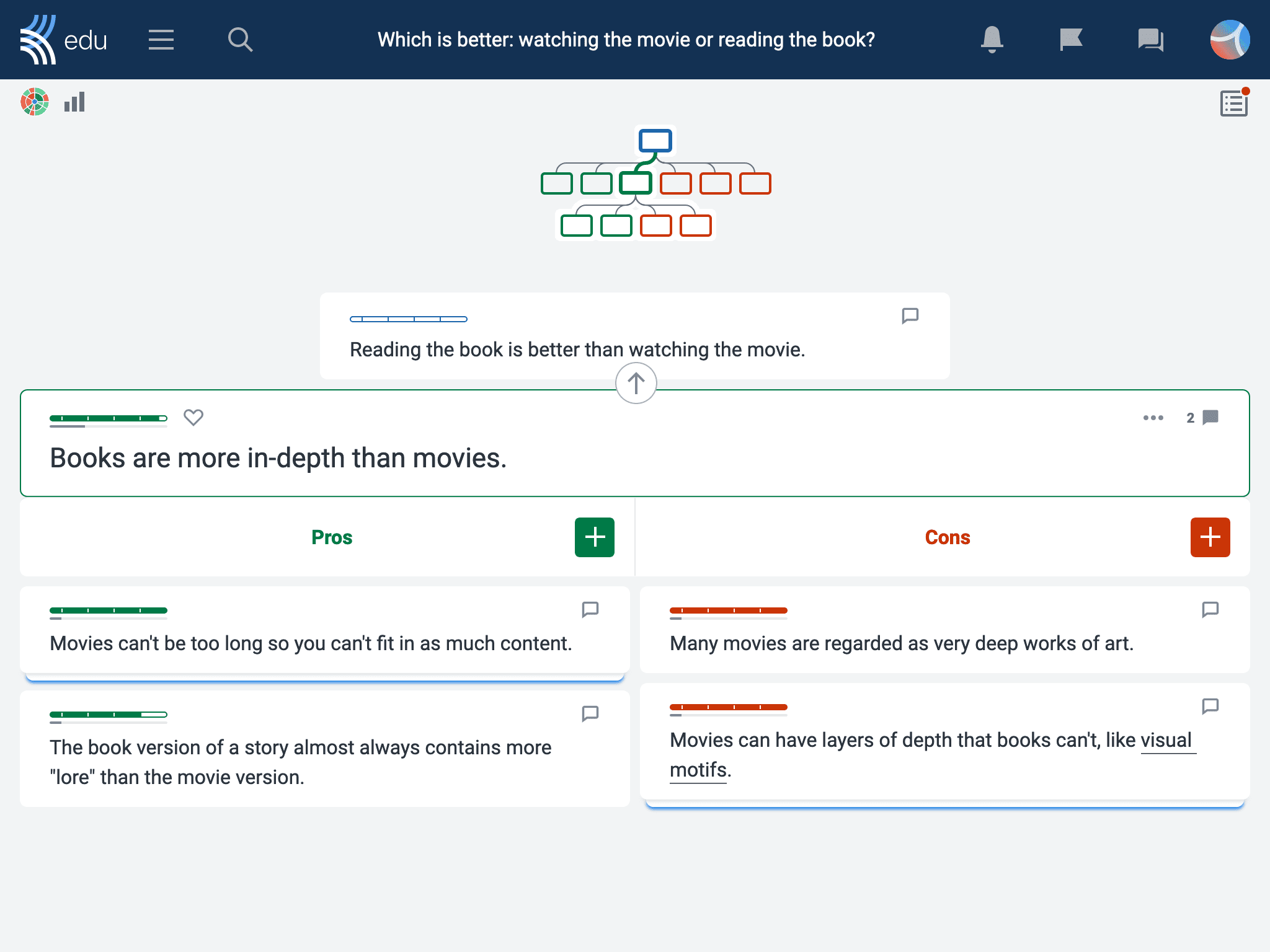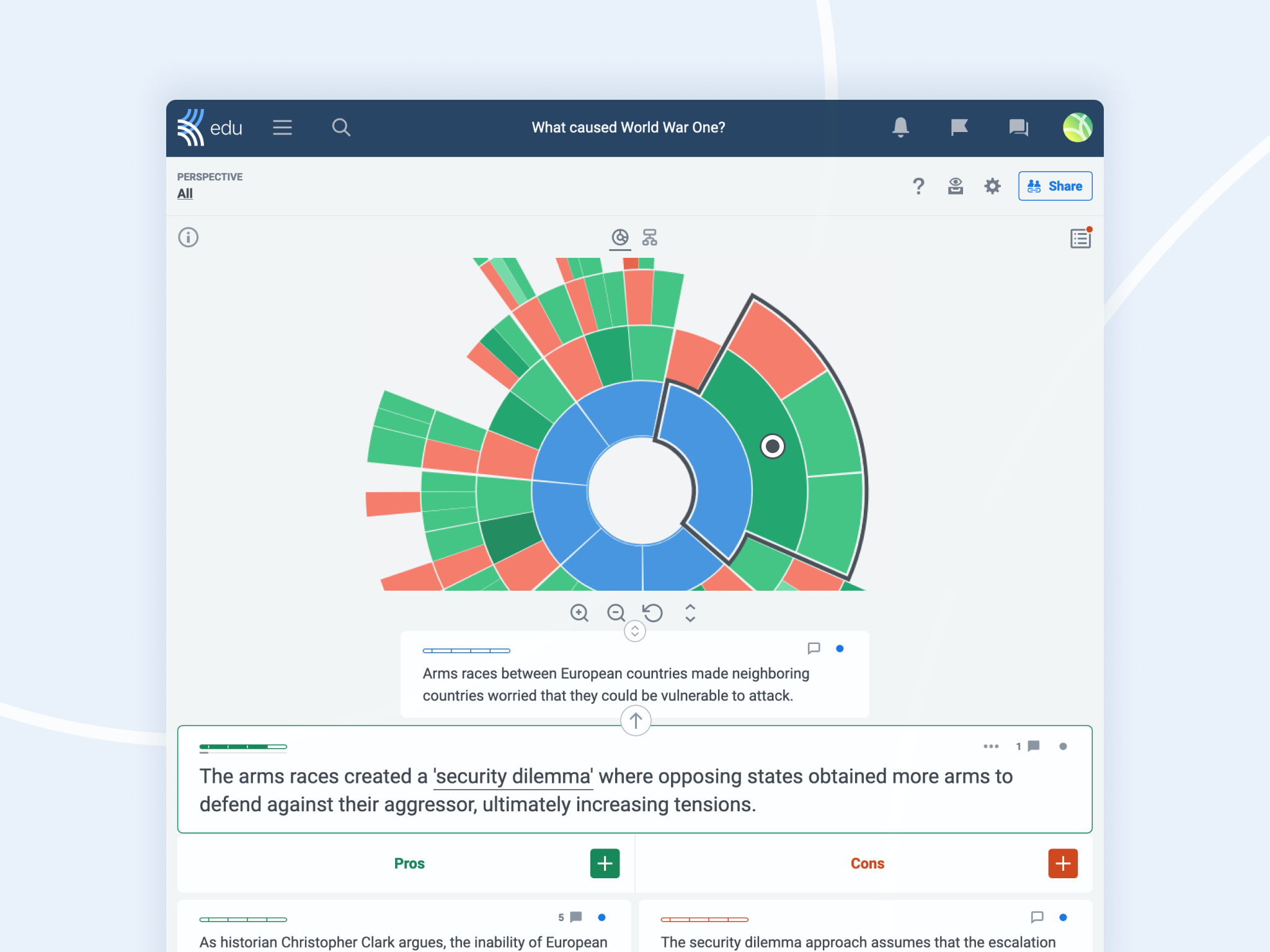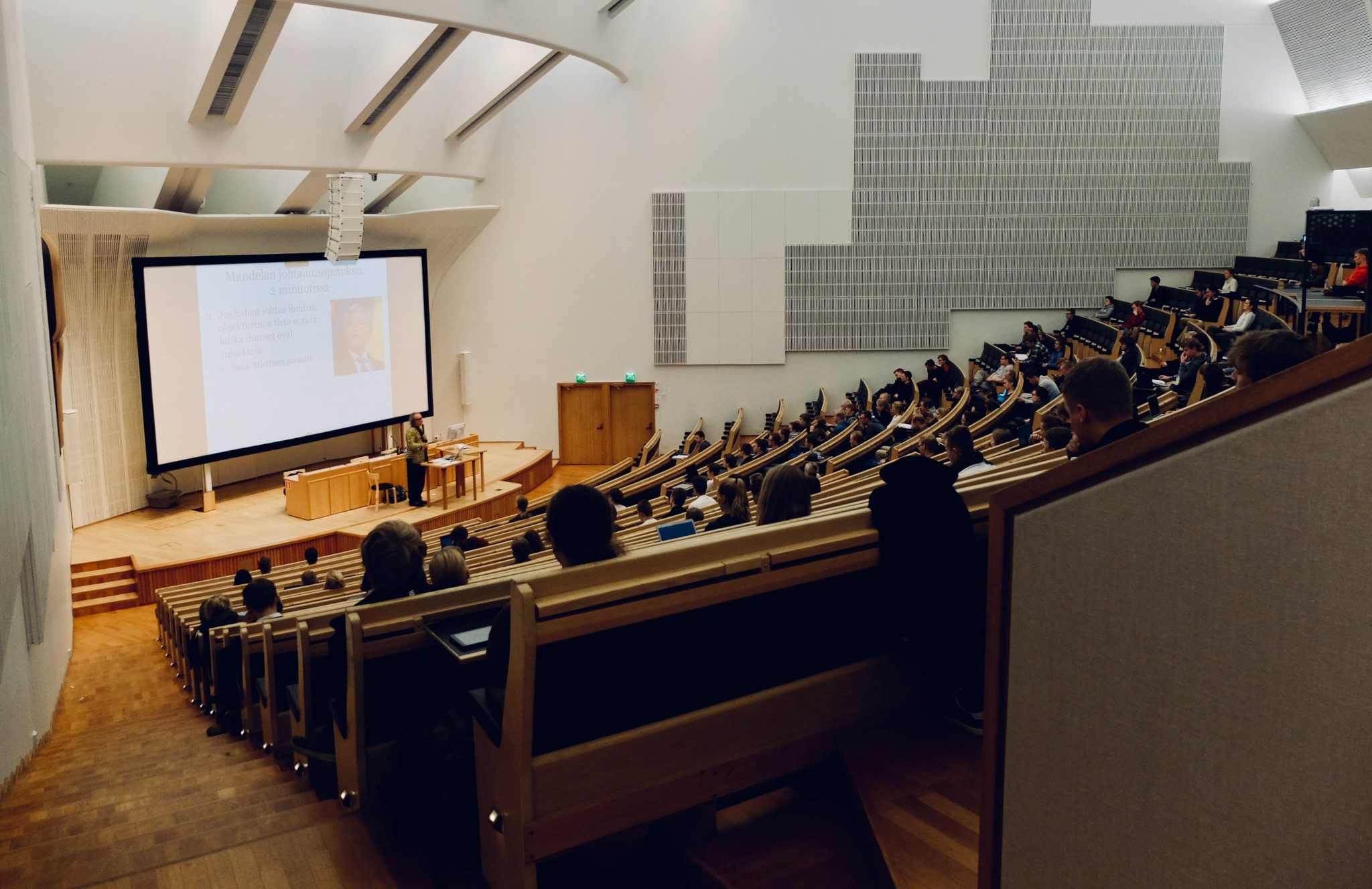“What I hear, I forget; what I see, I remember; what I do, I understand.” This quote from Confucian scholar Xunzi (c. 340-245 BC) demonstrates that active learning is not a new concept.
In fact, the benefits of active learning mean it should be a cornerstone of every classroom. Fortunately, there are many ways that teachers can use Kialo Edu to support this!
What is active learning?
When students actively learn, they build knowledge through meaningful experience. In these learning experiences, students think, discuss, investigate, and create to construct their own understanding. By doing so, they move toward the top levels of Bloom’s Taxonomy, applying higher-order thinking skills. Thus, students’ learning is more likely to be transferred to their long-term memory.
Moreover, research confirms the benefits of active learning, with students achieving a higher pass rate than those learning through traditional, rote methods. So, let’s get active and see how you can use Kialo Edu to incorporate active learning with your students!
How to do active learning activities on Kialo Edu
1. Plan engaging class discussions for students
Class discussions and debates are perfect active learning activities. Students have to engage critical thinking skills, apply knowledge, and make connections to construct and rebut arguments successfully. The challenge lies in ensuring all students are actively participating. With Kialo Edu, the whole class can get involved in planning discussions, meaning all students are engaged in active learning.

Here’s how: To plan their discussion contributions, students can research the topic and add their arguments to a Kialo Edu discussion in the form of claims, either individually or collaboratively. Educators can review contributions and target struggling students, meaning everyone is active in the discussion.
Once students have planned their arguments, it may be hard to hold them back! While it’s good to see students so engaged, sometimes this enthusiasm can result in an unmanageable or unfocused debate.
To have a more streamlined debate, Kialo discussions have a clear structure based on argument-mapping princples. Arguments are set out in branches, with claims building on those above. To keep discussions on track and ensure all students are participating, encourage students to use the discussion overview structure to guide their arguments.

Pre-planning also prevents more confident students from monopolizing discussions. All contributions are visible to educators, so they can prompt contributions from less confident students. Or challenge confident students to bring others into the discussion. It’s time for everyone to have their voices heard!
2. Give feedback on active learning in Kialo discussions
Effective feedback bridges the gap between independent and guided achievement, addressing Vygotsky’s Zone of Proximal Development. This is particularly important in the context of active learning because it can be challenging to guide students when they are working independently. However, educators can give timely, constructive, and actionable feedback to the whole group or individuals in a Kialo Edu discussion.
This type of immediate feedback helps address misconceptions, and students can act on this feedback within the discussion. Feedback like this improves understanding, addresses misconceptions, and supports transferring learning to long-term memory.
3. Use Kialo discussions as an alternative to lectures

Kialo discussions offer an alternative to presenting information in passive lectures. Instead, educators can put the content of a lecture into an knowledge-sharing discussion. Students can then actively explore the map, responding to claims through commenting, voting, or the Discussion Chat.
Educators can leave space within the discussion for students to add claims from research. Or educators may display only one side of the argument, then ask students to research and write opposing claims while using sources to support ideas. As students are tasked to actively engage with the lesson content, this results in meaningful learning.
4. Use Kialo discussions to promote active collaboration
Collaboration can maximize the benefits of active learning by increasing students’ motivation as they work toward a team goal. It also exposes students to a range of perspectives, so they can practice responding respectfully. Moreover, students can increase their learning progress when using such collaborative approaches.
Putting students into teams on Kialo Edu allows educators to structure collaboration. For example, educators can give each group their own version of a discussion, differentiating each group’s needs. Educators can then set individual tasks that contribute to a shared goal, ensuring everyone in the group is accountable.
Alternatively, ask students to collaborate to create a discussion for another group of learners. Allocate a topic to each team and ask them to create a thesis and starter claims for the discussion. Groups then swap discussions to research the topic and add further claims. Both teams will need to actively engage with curriculum content helping to embed the learning in their long-term memories.
5. Use Kialo discussions to scaffold active listening

Most people believe that they are effective listeners, yet people only retain about half of what is said to them. Students may appear to hear what you are saying, even listening passively. But it’s only when students engage in active listening that true learning can occur. This involves taking account of someone else’s ideas, processing them, and responding respectfully.
Kialo discussions are great for scaffolding active listening skills. First, ask students to contribute written claims to a discussion and respond to others’ claims. Then, use this argument map to lead an oral discussion.
Having the written claims on hand helps scaffold active listening as students will already be familiar with the ideas. During the oral discussion, students will be able to use their active listening skills to develop respectful and well-thought-out responses.
We hope that you will actively engage with our ideas to promote active learning in your classroom. You may even have your own ideas for how to engage students further. Send them to us at feedback@kialo-edu.com, or contact us via social media. We promise to actively engage with your ideas!

